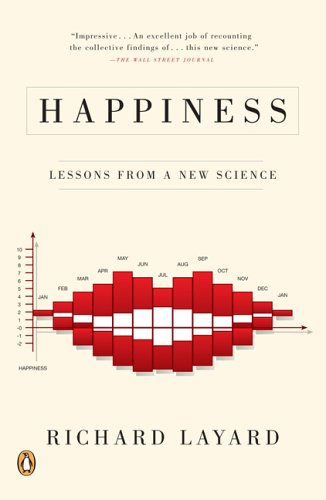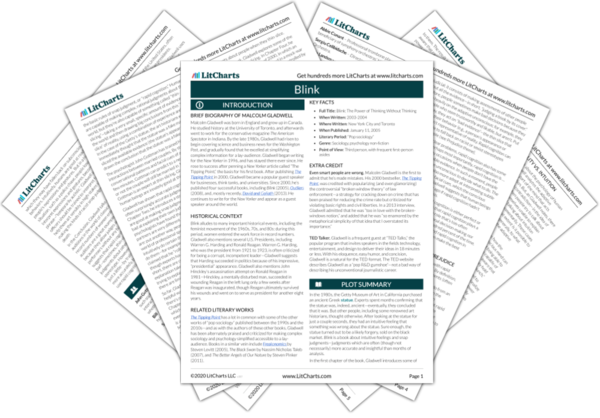2020. 3. 16. 12:28ㆍ카테고리 없음
SiNG8389SijiJan944 - Read and download Malcolm Gladwell's book Blink: The Power of Thinking Without Thinking in PDF, EPub online. Free Blink: The Power of Thinking Without Thinking book by Malcolm Gladwell.Blink: The Power of Thinking Without Thinkingby Malcolm GladwellSynopsis: In his landmark bestseller The Tipping Point, Malcolm Gladwell redefined how we understand the world around us. Now, in Blink, he revolutionizes the way we understand the world within. Blink is a book about how we think without thinking, about choices that seem to be made in an instant-in the blink of an eye-that actually aren't as simple as they seem. Why are some people brilliant decision makers, while others are consistently inept?
Why do some people follow their instincts and win, while others end up stumbling into error? How do our brains really work-in the office, in the classroom, in the kitchen, and in the bedroom? And why are the best decisions often those that are impossible to explain to others?In Blink we meet the psychologist who has learned to predict whether a marriage will last, based on a few minutes of observing a couple; the tennis coach who knows when a player will double-fault before the racket even makes contact with the ball; the antiquities experts who recognize a fake at a glance.


Here, too, are great failures of blink: the election of Warren Harding; New Coke; and the shooting of Amadou Diallo by police. Blink reveals that great decision makers aren't those who process the most information or spend the most time deliberating, but those who have perfected the art of thin-slicing-filtering the very few factors that matter from an overwhelming number of variables.
In the 1980s, the Getty Museum of Art in California purchased an ancient Greek statue. Experts spent months confirming that the statue was, indeed, ancient—eventually, they concluded that it was. But other people, including some renowned art historians, thought otherwise. After looking at the statue for just a couple seconds, they had an intuitive feeling that something was wrong about the statue. Sure enough, the statue turned out to be a likely forgery, sold on the black market.
Blink is a book about intuitive feelings and snap judgments—judgments which are often (though not necessarily) more accurate and insightful than months of analysis.In the first chapter of the book, Gladwell introduces some of the basic rules of snap judgment, or “rapid cognition.” Humans are capable of making complex, rational judgments about the world, but they’re also capable of something called “thin-slicing”—taking a very small, specific amount of evidence about the world and then drawing big conclusions from this “thin slice” of reality, using a combination of experience and intuition. In the case of the Getty’s statue, the art historians who immediately thought that the statue was a fake may have thin sliced the available evidence (the statue’s appearance) and drawn the conclusion that the statue was a fake.The psychologist John Gottman has trained himself to thin slice interactions between married couples. By studying the conversational patterns and facial cues of a couple for just a few minutes, Gottman can predict to a near-certainty whether or not the couple will still be married in 15 years. While Gottman is an expert at thin-slicing, Gladwell argues that all human beings are innately good at thin-slicing.Gladwell has shown that rapid cognition allows people to make often surprisingly accurate judgments about the world. But in Chapter Two, he introduces a strange problem: even if people are good at making snap judgments about the world, they’re bad at explaining their own judgments. For example, psychologists have found that people’s actual tastes in romantic partners are very different from what they think their tastes are: put another way, people can’t explain what they want. The world of professional sports is full of examples of people who intuitively do certain things, but can’t put into words why they do them—for example, the tennis great Andre Agassi always claimed that he “rolled” his wrist when he returned a shot, even though experts have determined that he did no such thing.
In short, there are certain human behaviors for which the explanation takes place “behind a locked door.” Instead of trying to explain everything, perhaps people should accept that there are limits to rational explanation.So far, Gladwell has been talking about how thin-slicing can be a helpful way for humans to understand the world. But of course, there’s no guarantee that thin-slicing is accurate at all.
In Chapter Three, he talks about stereotyping—i.e., the cases in which people’s snap judgments about the world are wrong and even harmful. The political career of President Warren Harding is a great example of how wrong snap judgments can be. Millions of people elected Harding because he looked presidential—and yet he turned out to be one of the worst presidents in history.
Although people may be reasonable and accepting in their day-to-day lives, they’re often capable of making prejudicial or even racist snap judgments when they’re put under pressure. In car dealerships, for example, it’s been found that black people receive higher initial offers than white people do. While one could interpret this evidence to prove that car salesmen are consciously being racist, Gladwell suggests a more subtle explanation: even if car salesmen are tolerant and unbiased in their conscious minds, they may still make racist judgments about people when they thin-slice.In the second half of the book, Gladwell explores some of the case studies of his theory of thin-slicing. In Chapter Four, he looks at the famous Pentagon war game of 2000, in which an enemy red team and a heroic blue team engaged in a mock-war for control of the “Middle East.” The red team was controlled by Paul Van Riper, a former Vietnam commander who used an improvisational, intuitive style of leadership. Although the blue team had far more soldiers and firepower than Van Riper’s red team, and used a rigorous, rational decision-making process, Van Riper was able to devastate the blue team’s forces. One important lesson to draw from this story is that more information isn’t always helpful in the decision-making process; in fact, extra information can distract and confound the decision-makers. Gladwell describes the process of “verbal overshadowing,” in which the act of attempting to vocalize and rationalize one’s decisions prevents one from making good intuitive decisions.
Van Riper succeeded as a commander because he didn’t overburden his troops and commanders with excessive information: he used intuition and rapid cognition to fight the blue team.In Chapter Five, Gladwell studies the process of polling, a good example of how poorly people understand their own needs and desires. The musician Kenna has been trying to make it big for more than a decade: he’s highly talented, and gets glowing reviews from professional musicians, producers, and lyricists, but for some reason, his music has never “tested” well among audiences (i.e., when a sample audience is asked to listen to his music and rate it, he never gets good reviews). Gladwell argues that Kenna’s poor audience tests don’t necessarily prove that he’s a bad musician, or that he couldn’t be a big star. Polls and tests are notoriously unreliable, because they force people to put into words what they do and don’t like about a product: a process that often interferes with people’s rapid cognition. Gladwell discusses many examples of successful products (margarine, the Aeron chair, the TV show All in the Family) that tested poorly but ended up being hugely successful.
In a poll or test, it’s easy for sample audiences to confuse “different” and “bad,” with the result that often, revolutionary new products test poorly simply because they’re so novel. Perhaps Kenna’s problem is that music studios are too reliant on test audiences—a new, creative musician like Kenna won’t necessarily do well with test audiences, even if he could be a superstar.In Chapter Six, Gladwell studies the tragic case of Amadou Diallo, an immigrant who was murdered by four plainclothes police officers in 1999. While Diallo’s death seems like a textbook example of police racism (Diallo was unarmed and standing outside his apartment building when the police officers approached him), Gladwell suggests that the four police officers weren’t consciously racist in their behavior; rather, they experienced a crisis of rapid cognition, during which they may have fallen back on subconscious racist behaviors.
Intuitively, humans are good at reading other people’s expressions and gestures. But in a high-stakes situation, such as a police chase, people lose their ability to interpret expressions and gestures, becoming—in Gladwell’s phrase—“temporarily autistic.” Gladwell argues that police officers should be trained to interpret facial cues, as this will help them act sensibly in high-stakes situations and avoid making the kinds of racist snap-judgments that led to Diallo’s death.In the Conclusion, Gladwell talks about the rise of blind auditions in the world of classical music—which has led to record numbers of women entering elite orchestras. Blind auditions are a great example of rapid cognition at its best, because they allow judges and selection committees to hear performers without any biases or prejudices. In short, Gladwell suggests that rapid cognition isn’t inherently good or bad—sometimes, thin-slicing helps us make insightful judgments about others, and sometimes it leads us to stereotype.
Blink Book Summary App
However, by controlling the process of thin-slicing just a little—by training police officers to interpret facial cues more accurately, by introducing blind auditions, etc.—we can use rapid cognition to make the world fairer and safer.